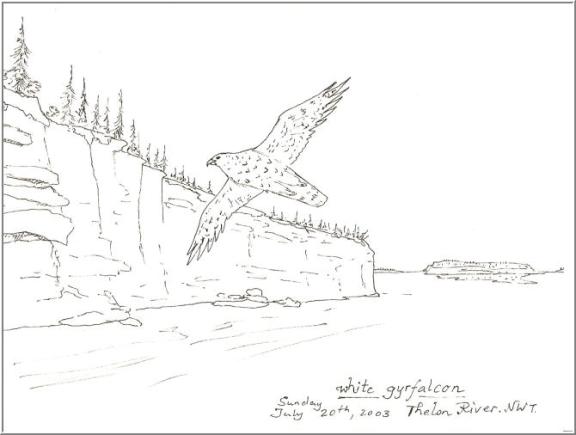July 20 – day 12 – false pingo
Unexpectedly, I found a ‘bug free’ time…just after midnight, dusky enough to be called dark but a glow on the eastern horizon gave hint of the soon to rise sun. Thick fog was blowing inland from the river, pooling in low spots. The sky overhead was clear and starry, decorated with a half moon. Probably 5C. As I yanked up my pants, I wondered what it would be like to travel the river at night.
In the morning, only a slight haze remains from the night fog. We pack and depart, content merely to drift with the current and let the Thelon set the pace.
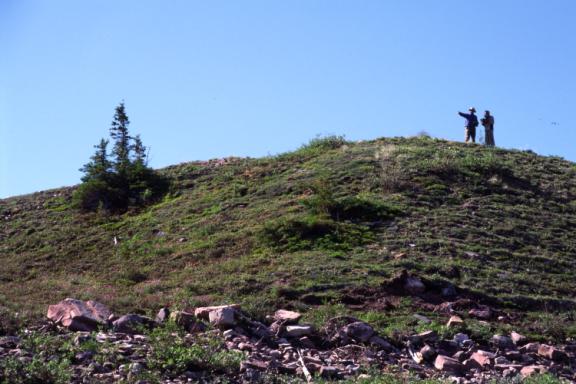
After some time, we grow restless. The banks are high and views are limited to the river. Curious, canoes are beached and we scramble up to see beyond – but the country is flat and featureless. Ironically, on the opposite side of the river, a solo muskox ambles along the gravel. Had we stayed on the water, it would have been our closest encounter with this relative of the goat.
Lazy days on the Thelon – more great weather, easy paddling and enough wildlife encounters to keep eyes peeled. The number and variety of birds is huge, in this particular stretch of river, there seems to be a bald eagle pair on every cliff face. Rounding one gentle sweep of river, there looked to be a large piece of driftwood on shore, which was rather uncommon. As we drew closer, it suddenly flapped its wings and took off – it was an immature bald eagle, sitting on the gravel.
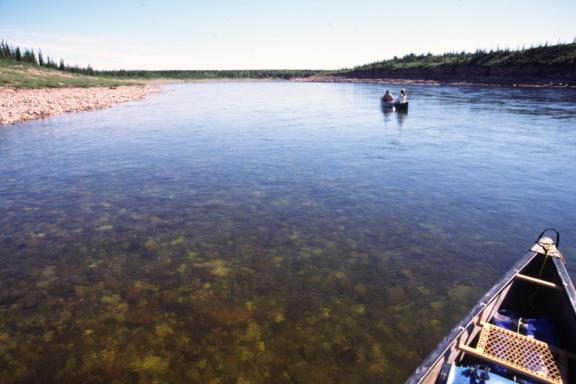
Later, Ron spots a white wolf. It inspects us carefully, ears cocked, head tilted, eyes bright. Was that my imagination, or were its lips drawn back as if to smile? One last glance over its shoulder before sauntering up a side stream gully.
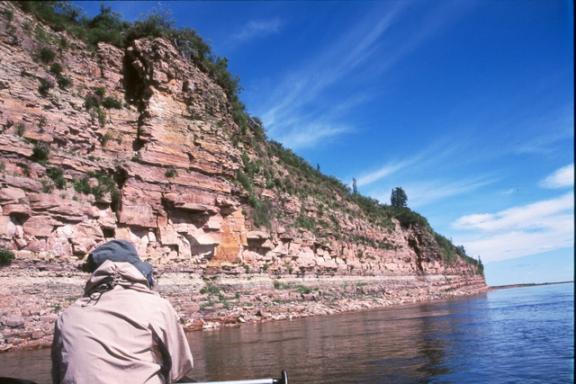
Cliffs were a favoured hangout for the peregrines, who seemed content to screech as we passed by. Taking shelter in the shadows of any crack, they blended in and only became visible when they took flight. This occurred at regular intervals: how many pairs nested on this particular exposure? A pair of arctic loons, well dressed with their black throats and grey-white plumage fished the river quietly.
It’s a short day. Camp is up by 3pm on top the usual river bank with views of a sand island 100m away. We want to explore 3 km to the north, where the topo maps indicate a pingo. This is not the well documented pingo that many modern paddlers visit, which is about 10km downstream.
Off we go, bush whacking through the spruce groves, then swampy ground, gaining elevation to reach a plateau of hummocks and tundra. A pair of golden plovers serenade us, their musical call, trilling up and down. Following a contour line for 45 minutes, there is no pingo in sight. Of course, we could have taken a heading and followed the GPS but what fun is that? Heading across a flat marshy area, it gets wetter and wetter until enough water collects to form a 10’ wide river. The map indicates the pingo is within 100m but nothing is higher than a spruce tree. By now, I’ve had enough exploring and happily return to camp for ‘hodge podge’ dinner (a mix of lentils, beans, butter, doused with hot sauce in a split pea soup mix).
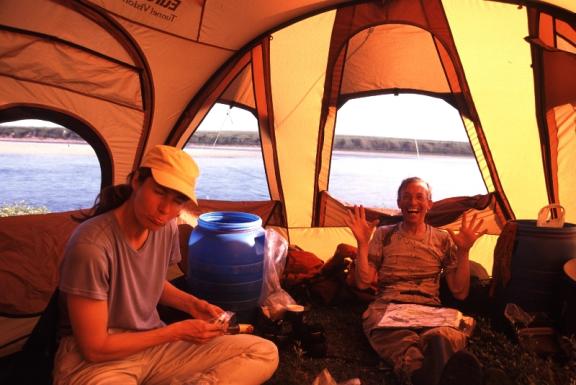
Alfred sketches the gyrfalcon which came out of the cliff so suddenly, no one could get a photograph. The bird flew low, his black eyes glittering…a close encounter of the avian kind.
